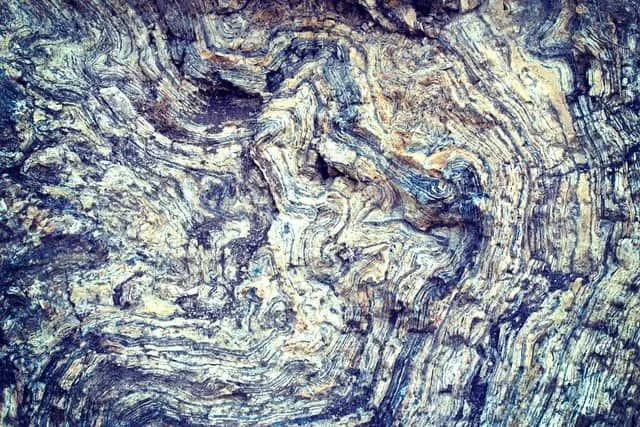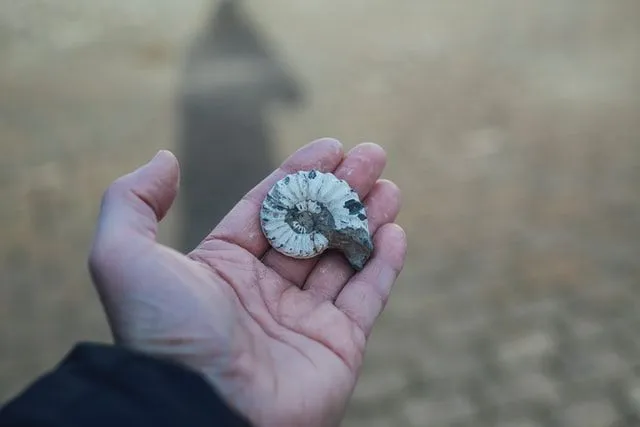FOR ALL AGES
Here at Kidadl, we are no strangers to how tricky school projects can be.
Children's homework seems to get harder and harder, and many of us parents have long since forgotten what we learned in school! So we're doing the research for you, to bring you articles that are both helpful and fascinating.
If you have children that are interested in science or the environment, why not check out these Water Conservation Facts or Facts About The Asthenosphere with them? Or, if you have kids aged between 12 and 16 that are studying geology or earth sciences at school, why not delve into the history of some of the Earth's oldest rocks with this comprehensive collection of information all about the principle of superposition.
From fossils to age dating, let us explain the law of superposition for kids and parents. Here's everything you need to know in a handy bite-size guide.
1. The law of superposition is a major principle of stratigraphy, a scientific discipline that looks at successive layers of rock and how they determine age.
2. The law states that within a sequence of layers of sedimentary rock, the oldest layer is at the bottom and each layer above gets progressively younger.
3. The law means that the deeper we dig, the further back in time we are able to see as each layer exposes us to a different era.
4. This means that the law is really important, as it helps us to examine and interpret the whole of the Earth's history!
5. The law is one of the general principles of geology, the science that studies the Earth's physical structure and history of rocks.
6. The geology law is a part of 'relative' age dating, which is different from 'absolute' age dating where you can determine a real age in actual years.
7. Relative dating, and the law of superposition, can only be used when the sedimentary layers of rock have been preserved in their original sequence.
8. Sometimes, erosion means that so much of the sedimentary rocks have been worn away, that it is no longer clear which edge of each layer is the original top or bottom.
9. Sometimes, deformation causes the sedimentary rocks to tilt, perhaps even overturning them, so it is no longer possible to determine the correct layers in the sequence.
10. The laws of superposition are a qualitative method of dating.
11. Superposition in geology for archeology is used slightly differently, because of the influence of man-made interruptions to the rock layers.
12. The law was first proposed by a Danish geologist called Nicolaus Steno, and is one of four laws.
13. Steno's work was expanded upon and popularized by William "Strata" Smith, who used it to create the first geologic map of Britain.
14. The principle is the first of Smith's laws, two rules which help determine geological succession, or the sequence of rocks.

In the principle of superposition, rocks are very important: you can't apply this principle to just any old rock! Discover everything you need to know about sedimentary rocks, and why they are used with this principle, with this easy-to-read collection of facts.
15. The law can only be applied to sedimentary rock.
16. The other two major rock types, igneous rocks and metamorphic rocks, form at very high temperatures and pressures, which would destroy all the fossil remains that are preserved within the layers of rock.
17. Igneous and metamorphic rocks are also formed deep within the Earth, making them difficult to study.
18. Sedimentary rocks are formed on or near the Earth’s surface, and form in a sequence of rocks, layer by layer, preserving fossils in the layers and allowing us to see and explore the rocks' history.
19. The key geological processes that lead to the creation of sedimentary rocks are erosion, weathering and precipitation, dissolution (a form of chemical weathering) and lithification.
20. Erosion, weathering and dissolution wear away at stone to create sediments, like sand or mud, that fall to the ground and create the layers, whereas precipitation and lithification are processes that build new rocks or minerals.
21. Sedimentary rocks can be split into two categories: detrital rock and chemical rock.
Find out more about the man behind the formulation of the geological law of superposition, geology superstar Nicolaus Steno. He was really ahead of his time and his critical thinking and innovative approach to science led to the theory which still forms the heart of our knowledge now, 400 years later!
22. Steno's four laws are the law of superposition, the law of original horizontality, the law of cross-cutting relationships and the law of lateral continuity.
23. Steno's four laws were theorized in his book "The Prodromus of Nicolaus Steno’s Dissertation Concerning a Solid Body Enclosed by Process of Nature Within a Solid," which was published in 1669.
24. Steno was a very curious and forward-thinking person who lived by the principle that you should never believe everything you read - instead, you should observe, research, investigate and come to your own conclusions, even if that means going against what is generally believed to be true.
25. Steno worked with several of the most notable thinkers and scientists of the time, including Galileo the famed Italian astronomer, physicist and engineer.
26. Steno carried out some work in the fields of human anatomy and medicine, but was most fascinated with the world around him.
27. Steno's published accounts of how layers of rock are formed challenged the established view on the formation of the Earth, as most people of the time were very religious and did not believe that the Earth was millions of years old and that fossils were the remains of previously living organisms.
28. It was when Steno was sent a huge shark head for dissection that he made a discovery and the law of superposition was formed. Whilst studying the shark, Steno noted that its teeth resembled stony objects, that were previously known as “Tongue stones,” that had been found embedded in rocks.
29. His investigations with the shark teeth led him to question how a solid object could be found inside another solid object, and so he came to theorize that in layers of sedimentary rocks in a sequence, the older rocks would be at the bottom with the younger rocks on top.

The law is best used when combined with other factors - read on to find out more.
30. The law can be combined with index fossils to determine relative ages.
31. By applying the law of superposition, we can determine that certain organisms are much older than others, and which geologic times they lived in, because of the fossils preserved in the different layers of sedimentary rocks.
32. If an animal lived in a narrow range of time, it makes that layer easier to identify and attach to a specific point in history, making that animal a good index fossil.
33. To be an index fossil, an organism must have only lived during a short part of Earth's history; many fossils must have been found in the rock layers, to prove the fossil was not an anomaly; the fossil must be found over a wide area of Earth; and the organism must be totally unique.
34. Fossils that are found in many different rock layers, meaning they lived for long periods of time, do not qualify as index fossils.
Here at Kidadl, we have carefully created lots of interesting family-friendly facts for everyone to enjoy! If you liked our suggestions for Geologic Law Of Superposition: Fun Facts And Explanation For Parents & Kids, then why not take a look at Iceberg Alley Facts, or Appalachian Mountains Facts?
Read The Disclaimer
At Kidadl we pride ourselves on offering families original ideas to make the most of time spent together at home or out and about, wherever you are in the world. We strive to recommend the very best things that are suggested by our community and are things we would do ourselves - our aim is to be the trusted friend to parents.
We try our very best, but cannot guarantee perfection. We will always aim to give you accurate information at the date of publication - however, information does change, so it’s important you do your own research, double-check and make the decision that is right for your family.
Kidadl provides inspiration to entertain and educate your children. We recognise that not all activities and ideas are appropriate and suitable for all children and families or in all circumstances. Our recommended activities are based on age but these are a guide. We recommend that these ideas are used as inspiration, that ideas are undertaken with appropriate adult supervision, and that each adult uses their own discretion and knowledge of their children to consider the safety and suitability.
Kidadl cannot accept liability for the execution of these ideas, and parental supervision is advised at all times, as safety is paramount. Anyone using the information provided by Kidadl does so at their own risk and we can not accept liability if things go wrong.
Kidadl is independent and to make our service free to you the reader we are supported by advertising.
We hope you love our recommendations for products and services! What we suggest is selected independently by the Kidadl team. If you purchase using the buy now button we may earn a small commission. This does not influence our choices. Please note: prices are correct and items are available at the time the article was published.
Kidadl has a number of affiliate partners that we work with including Amazon. Please note that Kidadl is a participant in the Amazon Services LLC Associates Program, an affiliate advertising program designed to provide a means for sites to earn advertising fees by advertising and linking to amazon.
We also link to other websites, but are not responsible for their content.
Was this article helpful?



Browse Category



We’ll send you tons of inspiration to help you find a hidden gem in your local area or plan a big day out.



Check your inbox for your latest news from us. You have subscribed to:
Remember that you can always manage your preferences or unsubscribe through the link at the foot of each newsletter.